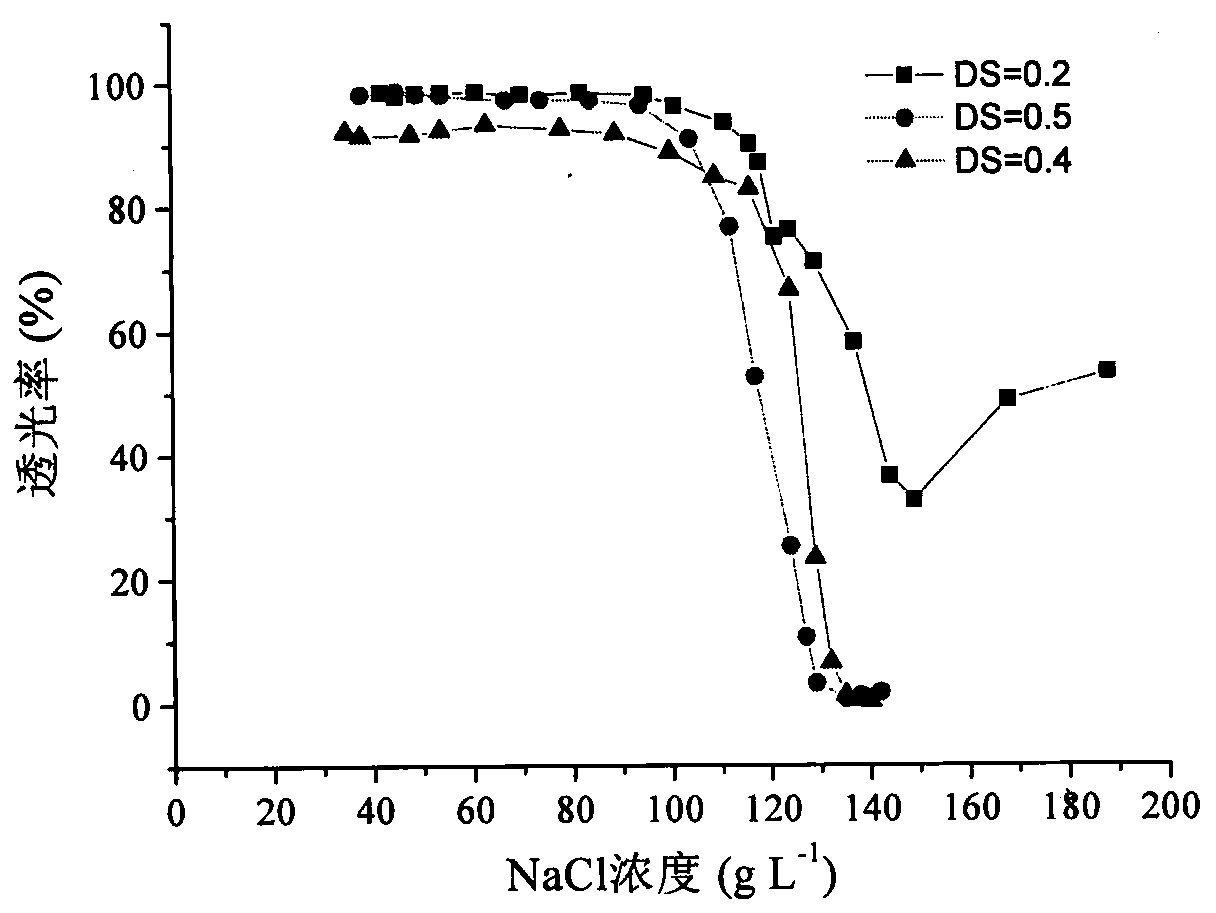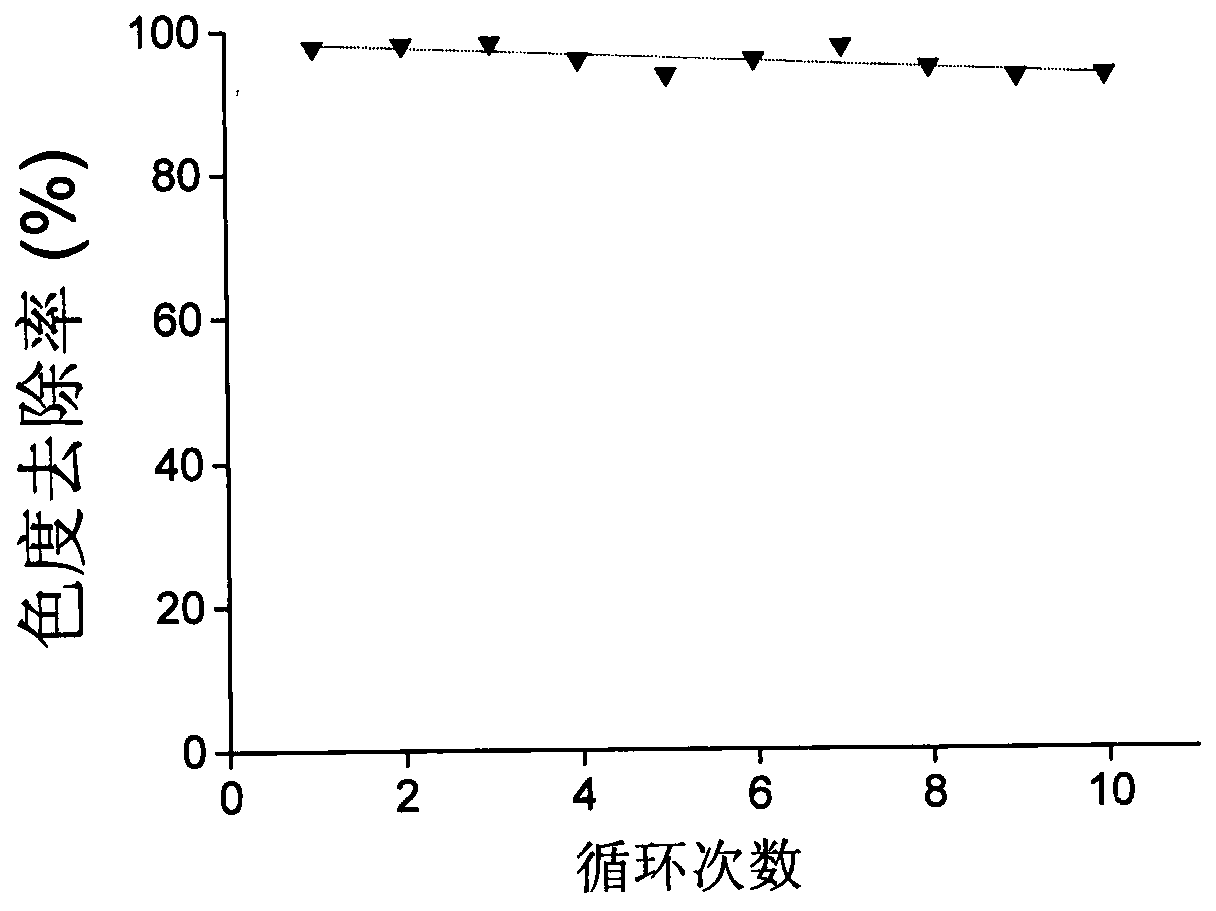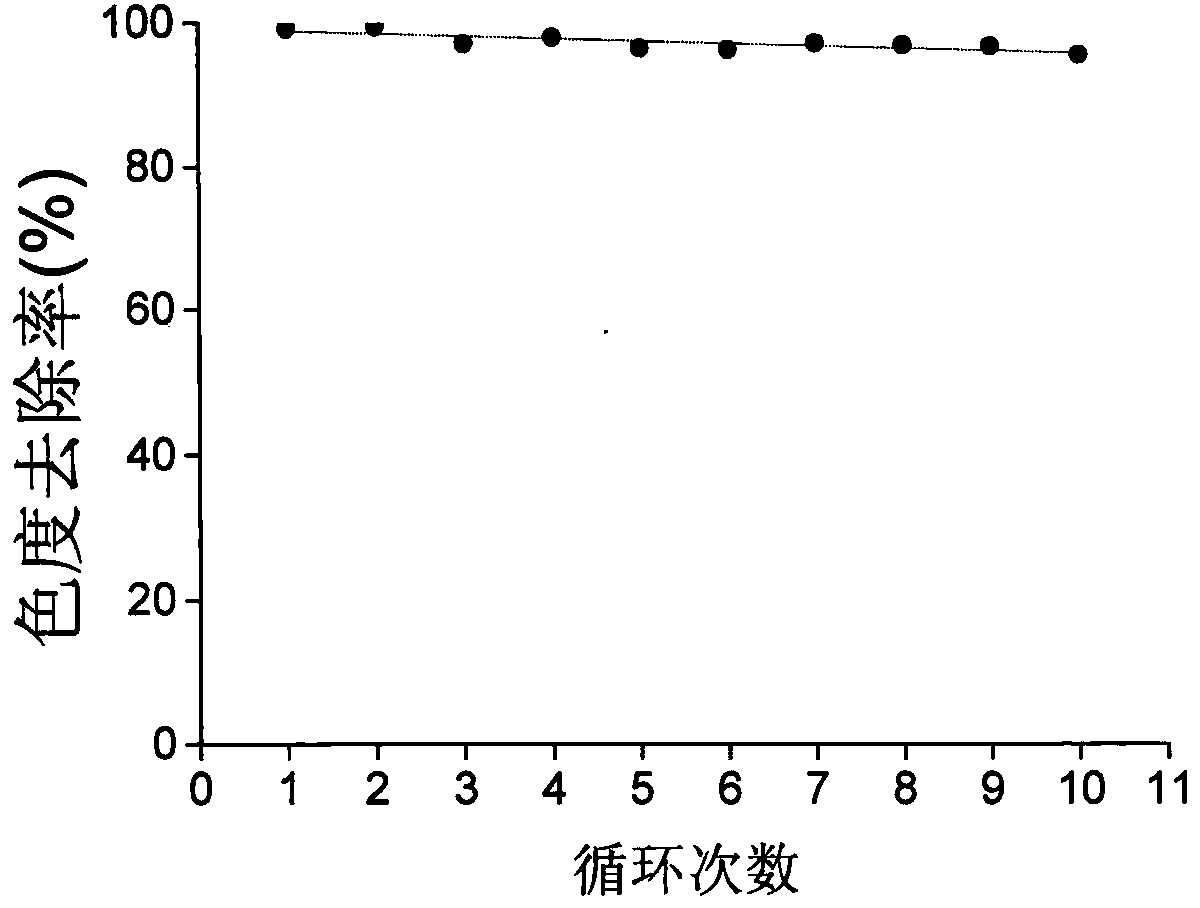Salt-sensitive flocculating agent as well as preparation method and application thereof
A flocculant and sensitive technology are applied in the field of salt-sensitive flocculants and their preparation to achieve the effects of low regeneration cost and simple and easy regeneration method.
- Summary
- Abstract
- Description
- Claims
- Application Information
AI Technical Summary
Problems solved by technology
Method used
Image
Examples
Embodiment 1
[0030] a. According to the mass ratio of p-aminobenzoic acid and cyanuric chloride 1:1.5, pour cyanuric chloride into a three-necked round-bottomed flask, add 100ml deionized water, stir at 0°C, press sodium hydroxide and cyanuric chloride The mass ratio of p-aminobenzoic acid and sodium hydroxide is 1:1.7. Dissolve p-aminobenzoic acid and sodium hydroxide in 50ml of deionized water, and add it dropwise into a three-necked round-bottomed flask. Stir continuously at a temperature of 0°C. After reacting for 30 minutes, heat up to room temperature. Stir the reaction for 3 hours, then use 3M HCL to adjust the pH to 4.6 to obtain a white precipitate, then filter it with suction, remove most of the water in a blast oven at 60°C, then dry it in a vacuum oven at 60°C for 6 hours, and grind to obtain a white precipitate Intermediate 2,4-bis(p-aminobenzoyl)-6-chloro-[1,3,5]-triazine;
[0031] b. According to the mass ratio of 2,4-bis(p-aminobenzoic acid)-6-chloro-[1,3,5]-triazine to sta...
Embodiment 2
[0035] a. According to the mass ratio of p-aminobenzoic acid and cyanuric chloride 1:1.5, pour cyanuric chloride into a three-necked round-bottomed flask, add 100ml deionized water, stir at 0°C, press sodium hydroxide and cyanuric chloride The mass ratio of p-aminobenzoic acid and sodium hydroxide is 1:1.7. Dissolve p-aminobenzoic acid and sodium hydroxide in 50ml of deionized water, and add it dropwise into a three-necked round-bottomed flask. Stir continuously at a temperature of 1°C. After reacting for 30 minutes, heat up to room temperature , stirred and reacted for 3 hours, and then adjusted the pH to 4.6 with 3M HCL to obtain a white precipitate, which was then filtered with suction. The filter cake was first removed with a blast oven at 60°C to remove most of the water, then dried with a vacuum oven at 60°C for 6 hours, and ground to obtain White intermediate 2,4-di(p-aminobenzoic acid group)-6-chloro-[1,3,5]-triazine, wherein the mass ratio of p-aminobenzoic acid and cy...
Embodiment 3
[0040] a. According to the mass ratio of p-aminobenzoic acid and cyanuric chloride as 1:1.5, pour cyanuric chloride into a three-necked round-bottomed flask, add 100ml deionized water, stir at 0°C, and press sodium hydroxide and cyanuric chloride The mass ratio of cyanogen chloride is 1:1.7. Dissolve p-aminobenzoic acid and sodium hydroxide in 50ml of deionized water, and add it dropwise into a three-necked round-bottomed flask. Stir continuously at a temperature of 5°C. After reacting for 30 minutes, heat up to room temperature, stirred and reacted for 3 hours, then adjusted the pH to 4.6 with 3M HCL to obtain a white precipitate, and then filtered it with suction. The filter cake was first removed with a blast oven at 60°C to remove most of the water, then dried in a vacuum oven at 60°C for 6 hours, and ground , to obtain the white intermediate 2,4-bis(p-aminobenzoyl)-6-chloro-[1,3,5]-triazine;
[0041] b. According to the mass ratio of 2,4-bis(p-aminobenzoic acid)-6-chloro-...
PUM
 Login to View More
Login to View More Abstract
Description
Claims
Application Information
 Login to View More
Login to View More - Generate Ideas
- Intellectual Property
- Life Sciences
- Materials
- Tech Scout
- Unparalleled Data Quality
- Higher Quality Content
- 60% Fewer Hallucinations
Browse by: Latest US Patents, China's latest patents, Technical Efficacy Thesaurus, Application Domain, Technology Topic, Popular Technical Reports.
© 2025 PatSnap. All rights reserved.Legal|Privacy policy|Modern Slavery Act Transparency Statement|Sitemap|About US| Contact US: help@patsnap.com



